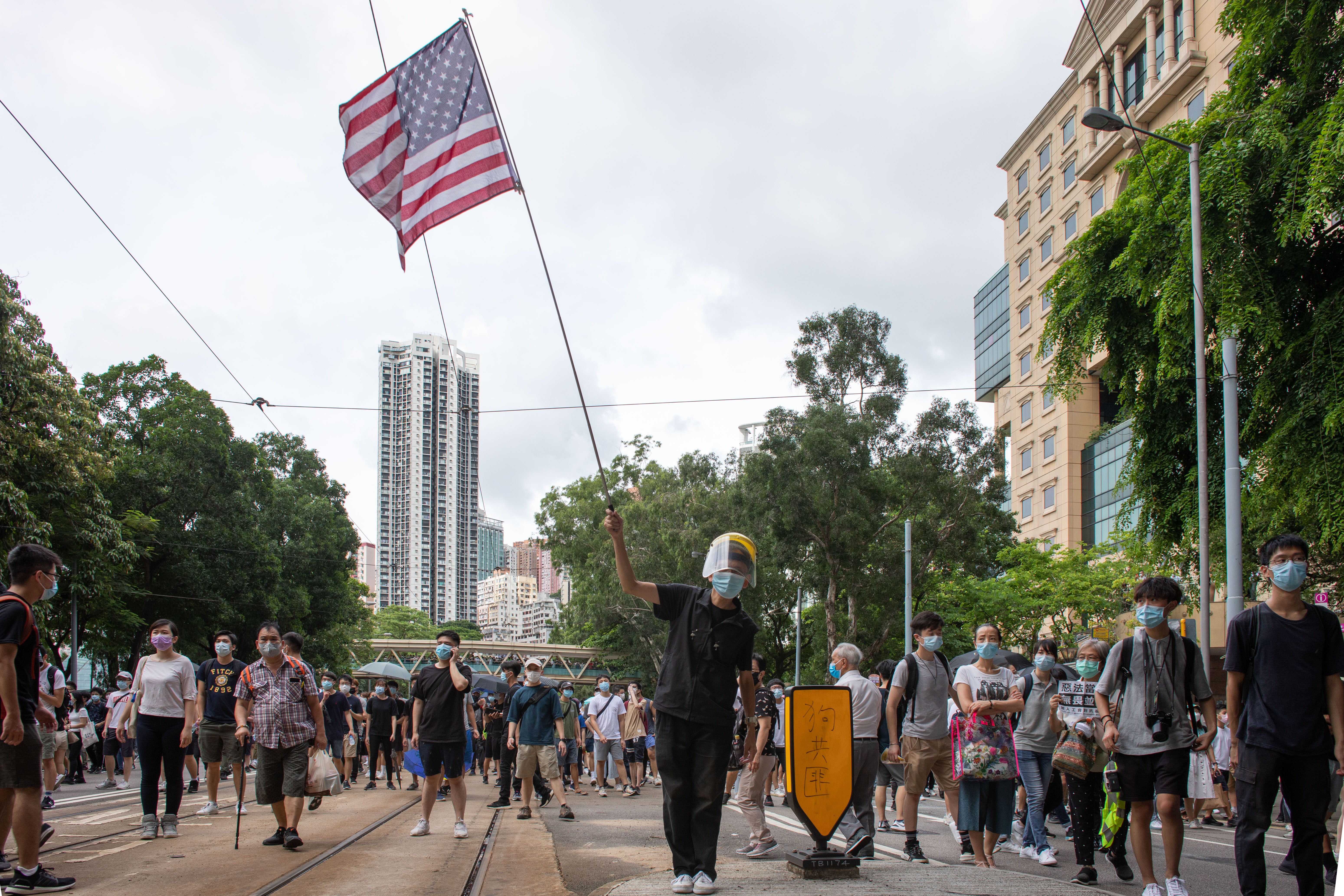U.S. Tightens Policy Towards China Amidst the COVID-19 Pandemic

U.S.-China relations improved after the signing of the “phase one” trade agreement in January this year. It was a token of de-escalation of the trade dispute and was intended to strengthen Trump ahead of the November presidential election. Even before the agreement was signed, the U.S. had removed China from the list naming it as a currency manipulator. At that time, the coronavirus was already spreading in China. Initially, President Trump praised the authorities for stopping it and the U.S. donated medical supplies to it. The position of the U.S. administration changed with the spread of the pandemic to the United States, currently the country with the largest number of infections and fatalities in the world.
Political Issues
China did not cooperate sufficiently with the World Health Organisation (WHO) at the beginning of the crisis, concealing information about the disease which made it difficult to contain the spread of the virus around the world. This prompted the U.S., along with other countries, to call for an international investigation into the outbreak. In May, WHO members agreed to the investigation. In July, the Trump administration officially announced the U.S. will withdraw from WHO (according to the rules, within one year) and accused the organisation of siding with China, among other supposed failures. Trump and members of his administration also frequently use terms like “Chinese virus” or “Wuhan virus” to highlight China’s alleged responsibility for the pandemic that is badly affecting the U.S. and other countries.
Tensions escalated again in May and June after China limited Hong Kong’s autonomy. The U.S. has stopped recognising Hong Kong as a separate entity, which had guaranteed the region lower tariffs and the ability to purchase American technologies to which China is denied access. The U.S. also suspended defence sales (mainly police equipment) to Hong Kong and introduced visa restrictions on Chinese officials connected to the region. In July, the U.S. Congress passed a law enabling the imposition of sanctions on individuals or companies (as well as financial institutions cooperating with them) contributing to the violation of Hong Kong’s autonomy.
The U.S. also is showing support for Taiwan. In May, U.S. Secretary of State Mike Pompeo sent a congratulatory letter to President Tsai Ing-wen, who is at odds with the mainland authorities, on her swearing-in for a second term. The letter emphasised Tsai’s “courage and vision”. This was a first in U.S.-Taiwan relations since the U.S. established diplomatic relations with China. On the day of her inauguration, the U.S. announced the sale of modern torpedoes to Taiwan. In addition, it supported the island's desire to include it in the work of the World Health Assembly, the decision-making body of WHO, as an observer, which has been opposed by China. Congress also ordered the administration to support Taiwan’s aspirations to participate in other international organisations. In May, Congress supported the imposition of sanctions on Chinese companies and the Chinese Communist Party secretary in Xinjiang for participating in the persecution of Uighurs. In July, the U.S. imposed visa restrictions on Chinese officials preventing foreigners from entering Tibet. It also accuses China of using the pandemic to increase its influence in the South China Sea, including military exercises. In response, the U.S. Navy conducted manoeuvres in this area in July. Moreover, in March, the Trump administration cut the number of journalists from media controlled by the Chinese government (e.g., Xinhua) working in the U.S. from 160 to 100, in reaction to, among others, obstacles to American journalists working in China.
Economic Issues
The “phase one” trade deal came into force in February; however, the pandemic has weakened the Chinese economy and hindered China’s implementation of the agreement. According to the Peterson Institute for International Economics, by May China’s purchases of American products had only reached 45% of the level assumed for this period. That is why in the same month Trump suggested the U.S. might terminate the deal. Nevertheless, in June, U.S. Trade Representative Robert Lighthizer stated that China is on track to achieve its objectives. In turn, Biden has attacked Trump for what he described as submission to China, citing the trade agreement as an example. The U.S. president dismissed the accusations, threatening to denounce the deal or impose new duties.
The Trump administration emphasizes that trade impediments caused by the pandemic have created opportunities for relocating factories from China to the U.S., aiming at “decoupling” the American economy from China. The U.S. government wants to support this process through tax breaks and other measures. At the same time, Congress is pondering a law introducing, among others, a requirement to disclose foreign government control of U.S.-listed companies. This may threaten the presence of Chinese companies on U.S. stock exchanges. In addition, in May, the U.S. Department of Commerce (Commerce) decided that from September this year, foreign companies must have authorisation to supply Huawei and its associated companies with processors made using American technology. In June, the Pentagon placed Huawei on a list of companies controlled by the Chinese army, which allows the imposition of financial sanctions. However, in the same month, Commerce enabled U.S. companies to cooperate with a Chinese tycoon in setting international standards for new technologies, including 5G.
Conclusions and Prospects
The presidential campaigns, Biden’s attacks on Trump, and the socio-economic effects of the pandemic in the U.S. radicalise the administration’s approach to China, especially in the information domain. There is bipartisan consensus as to the need to contain China’s rise, which is why Congress is also sharpening its course, stiffening the government’s position.
The U.S. has limited scope for action because of the need to restart the economy. Possible drastic decisions, such as the termination of the “phase one” deal and introduction of new duties, would hinder this process. Therefore, the Trump administration will mainly act in the political sphere by tightening its rhetoric with the intention of blaming China for the pandemic losses and undermining its credibility. Further limited sanctions against Chinese officials and companies, including those operating in Hong Kong, Xinjiang or Tibet, are also possible. In turn, the U.S. “decoupling” from China is most likely only in some areas, such as technology-heavy sectors.
It is not in China’s interest to tighten relations with the U.S. in part because of the need to improve the condition of its own economy. China accuses the U.S. of politicising the pandemic and is responding symmetrically to actions against it, for example, it imposed sanctions, including visa restrictions, on U.S. officials who “interfere” (according to the Chinese authorities) in the situation in Hong Kong, Xinjiang, and Tibet. In addition to continuing these actions, it may also halt the implementation of the trade deal, which could harm Trump's election campaign, as he presents himself as an effective negotiator.
The EU, which in its summit with China in June confirmed its will to pursue an assertive policy towards the country, will want to develop cooperation with the U.S. in certain areas, such as investments involving Chinese companies or reducing China’s role in global value chains. China will try to weaken this cooperation by, for example, offering market opening to EU companies (including in services). At the same time, companies already operating in China may face difficulties if the EU acts against China. However, the Union will not follow the U.S. course of confrontation because of the need to cooperate with China on global issues, including boosting the global economy and protecting the climate. The EU may intensify cooperation with countries with similar views about the U.S.-China rivalry, including Japan, South Korea, Canada, India, and ASEAN members. If Biden, who declares attachment to multilateralism is a more effective foreign policy tool than unilateral actions, takes office as president, the U.S. could particularly depend on cooperation with these countries. China, which declares support for multilateral cooperation, will also be interested in gaining their favour. Thus, a coherent position between the EU and like-minded countries, for example, within the G20 and other international forums, could limit the escalation of tensions between the U.S. and China.



